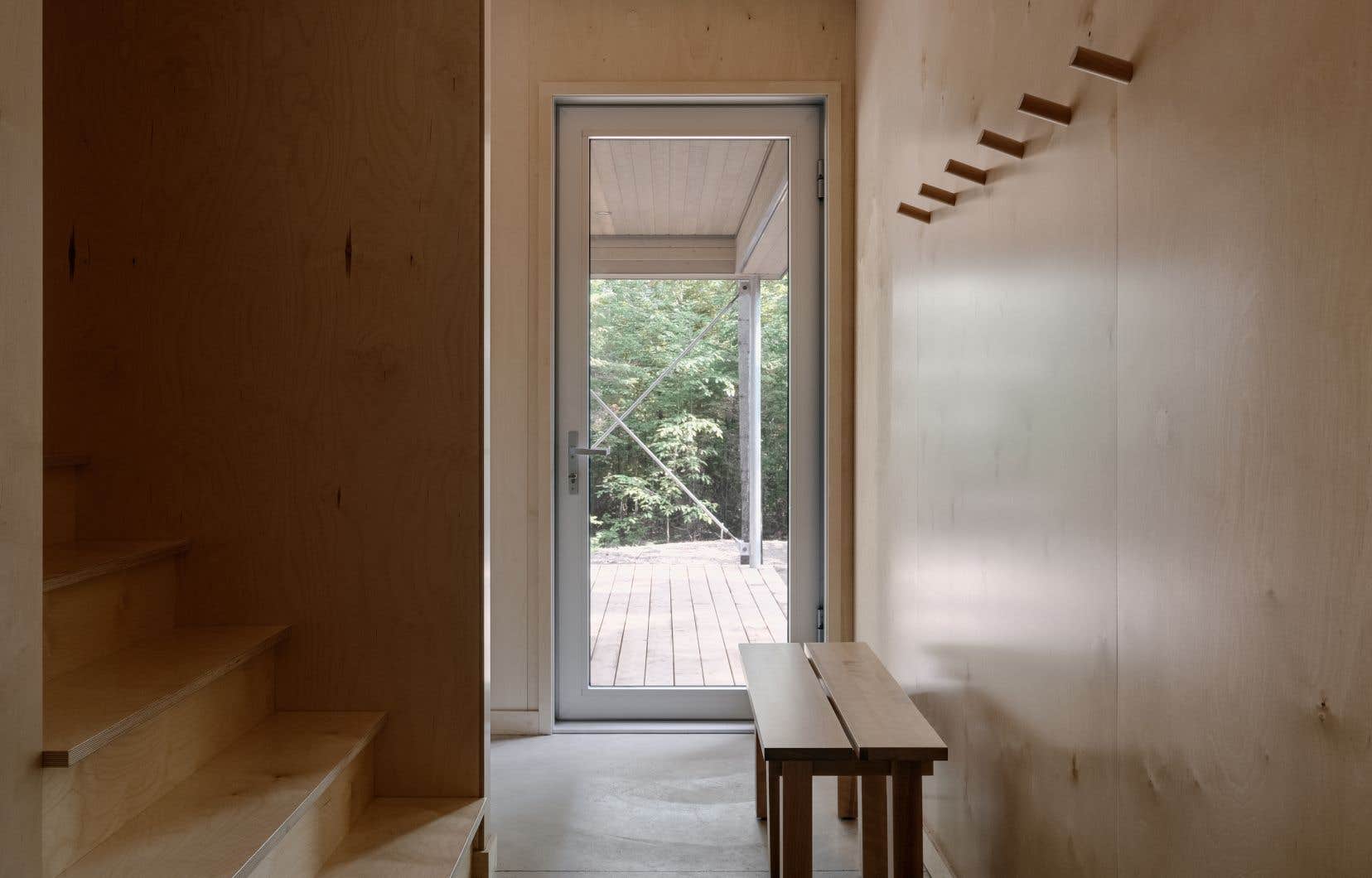This text is part of the special Pleasures notebook
It exists mainly in chalets and second homes and is a dream for those who live in homes with very small entrance halls. THE ” mud room ”, or oversized hall, is making its way from the countryside and the mountains to urban environments. Here is a transitional piece to imagine, optimize and personalize to transform the entrance to a residence.
For the record, note that the use of the term “ mud room » dates back at least to the beginning of the last century. Among the land workers, they preferred to use an entrance other than the main door, to avoid dirtying the house. This second access made it possible to remove boots soiled with mud and to remove some soiled clothing, hence the name ” mud room ” in English. This space was also very popular on the ground floor or garden level of residences in the mountains. In winter, this is where snow-covered boots, wet clothes and snow sports accessories were left.
Today, in urban areas, some do not hesitate to use the word “ mud room » to illustrate the functional side of this optimized space, despite the dimensions being significantly smaller than their mountain equivalent. Others prefer the term “entrance hall”. And the more occupants there are in the house, the more important the optimization of this space is.
The reinvented hall
The typical entrances to long apartments (like those in Montreal or Quebec) don’t leave much room for the imagination. At one time, the entrance to a home had more of a function as a thermal airlock than as a real entrance hall, explains Marc-Olivier Champagne-Thomas, associate architect at Apparatus Architecture. “As the apartments were small, we had to optimize the square footage and minimize the impact of a hall on adjacent rooms. The standard Montreal 25-foot lot often made it possible to make a room of approximately 11 feet net on one side, a corridor of 4 feet net and a room of 9 feet net on the other side. The airlock should therefore not take up the space of a bedroom or living room too deep in the house. Also, the airlock made it possible to manage thermal losses between the interior and exterior. »
This is why, when possible, we first try to recover square footage in an adjacent room, explains designer Mara Costachescu. “The space between the two doors is [inutilisable] due to the inward opening configuration. By looking for 2 legs to expand on one side, you can add a bench, hooks, overhead storage, provide space for boots, etc. »
If it is not possible to recover more square footage, the designer suggests removing the mudroom doors and optimizing storage up to the ceiling, with some open spaces and others closed. “You have to design a space that can hold all the items from the same season: gloves, hats, coats, scarves, boots, etc. »
Materials that make the weight
When redeveloping the hall, taking inspiration from the mud room, we must take into consideration the main purpose of this space: to facilitate the entry and exit of the occupants of the house in all seasons. “We need to think about materials that are water and humidity resistant. For the floor, we will prefer ceramic, slate or stone, explains Mara Costachescu. You should also think about a mat to absorb excess water. For the bench and the shelves, I really like noble materials, like solid wood. »
The architect agrees. “These places are often wet and require a durable material. We always suggest heated floors in mud room, so that the water evaporates quickly. It also allows you to dry wet mittens on the floor, for example. With a family, it’s practical. »
In addition to closed storage spaces, you should also provide an open section where you can hang wet clothes and bags. Bins or drawers for both adults and younger children to store items (sunglasses, keys, wallet, etc.) add even more functionality.
A successful first impression
The entrance hall is often the first room in the house that we discover when we visit people. This first impression sets the tone for what awaits us next. This first contact is important for the people we invite, but it is just as important for the occupants, who pass through the threshold of the accommodation daily. “This is what welcomes us every day,” recalls Mara Costachescu. The more functional this place is, the more pleasant it will be to enter and leave the house. We must focus on this space that is too often neglected, where everything must have its place. It is a piece that deserves to be rediscovered. »
Optimizing this place that we pass through several times a day also means simplifying our lives.
Large space, dream room
This content was produced by the Special Publications team at Duty, relating to marketing. The writing of the Duty did not take part.
